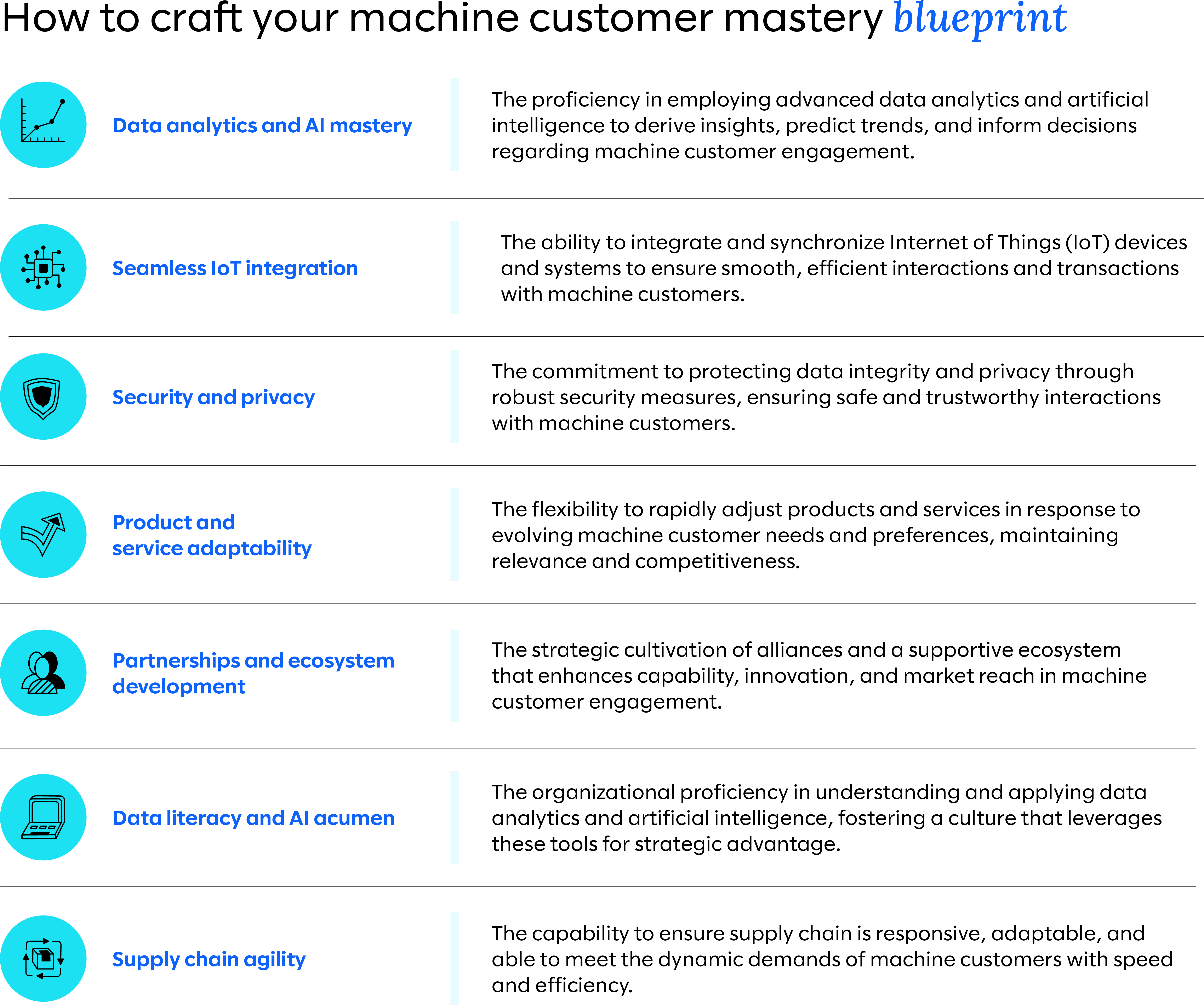Making sense of AI’s contradictions: Customer experience

What happens when AI-powered sellers meet machine customers?
Product and service providers have been applying AI in their interactions with customers for decades now. Some of the earliest uses focused on fielding basic queries and routing calls in automated voice systems. When customers moved online, so did the AI-powered assistants. Along the way, these assistants expanded and improved their conversational skills by incorporating machine learning (ML) capabilities and processing ever-growing volumes of data. The interactions, however, remained limited to specific scenarios the AI had been trained on, such as handling returns and refunds.
Building on these innovations, generative-AI-powered assistants can tap into even larger data resources to deliver much more natural and effective communications. They provide an in-store-like experience by answering queries but also asking logical follow-up questions to better understand and serve shoppers’ needs. With these more sophisticated interactions, analyst firm Forrester predicts that GenAI will be a valuable tool to help organizations provide faster and better service.
Selling and buying with GenAI
For sellers, the goal of using GenAI is clear—it’s engaging, (largely) efficient, and very closely mimics person-to-person interactions, so it can appeal to the same buyer motivations as a flesh-and-blood salesperson can. Tapping into those motivations is what drives brand loyalty.
But not every consumer needs that type of high-touch treatment. Buyers looking to make their purchases with little or no discussion can also use GenAI—but in this case, to bypass the sales pitch and go straight to the purchase transaction. We’ve seen examples of this already in the smart technologies being used in appliances and automobiles that can detect when we’re running low on milk or need maintenance and proactively place orders or set appointments for us.
These transactions are carried out by machine customers and often require no intervention from the human receiving the goods and services. Subscriptions for often-used items such as vitamins, pet supplies, and cleaning products are a form of machine customer that greatly benefits brands by providing a relatively predictable purchase cadence. GenAI-enabled machine customers, however, can scrape the entire internet for the best deals, thereby freeing consumers from vendor lock-in. As the technology evolves, AI-driven buying will likely have less to do with brand loyalty and more to do with efficiency, value, convenience, and necessity.
This raises some interesting questions. If sellers aim to use GenAI to provide a more personalized, humanlike experience for buyers while, at the same time, buyers are removing much of the human element by employing GenAI-powered machine customers, how will these seemingly contradictory efforts play out? How prevalent will GenAI machine customers be? Will they force sellers to rethink the ways they interact with buyers?
“I’ll have my AI get back to your AI”
Though machine customers are not new, using GenAI to improve their interactions is a very recent development. Over the next 10-12 years, analyst firm Gartner predicts a steady evolution in the way this technology will be applied to transactions:
- Bound customer (today): The subscription-type purchases mentioned earlier, where humans make the decisions and machines carry out the transactions.
- Adaptable customer (by 2026): Humans and machines working together to determine the most advantageous purchases from the pool of available options.
- Autonomous customer (by 2036): Machines take the lead based on a comprehensive understanding of the needs of the humans they’re transacting for.
So where does this leave sellers? According to Rio Longacre, Slalom managing director of advertising and marketing transformation, “As practitioners, we’ve started to think more about the customer and designing experiences with the customer in mind rather than all the cool features we want to include. Because of this shift, user interfaces (UIs) and the general usability of products have gotten much better over the last 10-15 years.” This way of thinking has also prompted sellers to offer a variety of ways to engage with their brands—some fast and focused on convenience, others more experiential and high touch—so they can satisfy a wider range of customer motivations.
Understanding the machine customer’s motivation is the first step to successfully serving this segment. As Tamarah Usher, Slalom senior director of AI innovation, points out, “Unlike traditional consumers, machine customers are actively analyzing data, learning preferences, and making purchases that align with the needs and habits of their human counterparts, a stark contrast to the emotion-driven decisions of human buyers.”
Capturing this data-driven customer segment requires a new channel for machine interaction. An article in InformationWeek proposes “designing self-service interfaces that are not only user-friendly for machines but also align with the intricacies of autonomous negotiation and purchasing processes.”
Though it may seem like a major adjustment for sellers, the cost of not adapting for machine customers could be significant. According again to Gartner, “By 2030, executives believe at least 25% of all consumer purchases and business replenishment requests will be substantially delegated to machines.” This, the analyst firm estimates, could total transactions in the range of trillions of US dollars.
Usher echoes the urgency of taking action to prepare for machine customers sooner rather than later. “Organizations can’t afford to be shortsighted, especially at the exponential rate these things are moving. Brands need to anticipate these changes and act quickly to avoid being disrupted.”
Targeting CX to both machine and human customers
A recent study conducted on 42 Finnish companies provides some insights as to where organizations should focus their efforts when building channels for machine customers. The study used a digital agent to interact with various customer service experiences to uncover potential difficulties when transacting with machines. The problem areas included:
- Forms with fields that could be difficult for machine customers to recognize
- Chatbots that may not be able to handle more complex input
- Delayed responses by human agents, resulting in machine customer agents abandoning the interaction
- Redirects to phone representatives, when digital agents may not be able to understand or respond to verbal communication
Along with considerations like these, Slalom’s experts recommend evaluating a variety of areas within your operations to ensure you’re ready to efficiently transact with machine customers. Your blueprint for machine customer success should focus on:
- Data analytics and AI mastery
- Seamless Internet of Things (IoT) integration
- Security and privacy
- Product and service adaptability
- Partnerships and ecosystem development
- Data literacy and AI acumen
- Supply chain agility


Have questions about your AI journey?
For serving your non-machine customers—specifically those who want more high-touch interactions—GenAI will prove extremely valuable. “Anyone who works in marketing will tell you that personalized experiences have always been the Holy Grail,” says Longacre. “The more personalized elements you put on the page, the better the experience and better your chances of getting conversions.” But this kind of personalization has traditionally been very difficult to scale—until GenAI came along. With the ability to access and learn from vast amounts of data, GenAI CX tools will be able to deliver the hyper-personalization sellers have long sought.
GenAI can also be used to increase the efficiency of broader awareness campaigns. It can create “synthetic” audiences that marketing can use to test their content and outreach. “Think about using GenAI to identify clusters of traits and create audiences that we think will perform better,” explains Longacre “and then going to demand-side platforms and buying based on the results, for example. I believe we’re going to be seeing some interesting things that we were all hoping to have in previous tools but didn’t. But they will be possible soon with GenAI, which is very exciting.”
The time to act is now
Sellers are constantly monitoring buying trends to determine the best ways to reach their target audiences. There has never been a one-size-fits-all solution when it comes to meeting customers where, when, and how they want to be met. Addressing the machine customer segment adds yet another prong to the already multipronged approach sellers must use to serve their customers.
With new GenAI products and innovations rapidly coming to market, perhaps the most important advice when it comes to GenAI—whether using it to delight your customers or adapting to how your customers will use it—is to act now. “If you create this capability,” says Usher, “and bring it to your platform or site, you can be the one getting data from your customers around their preferences and sizes and needs, versus it being captured and provided back to you by a third party. You can choose to react to that when it happens and try to gain back the engagement with your customers, or you can be proactive. We all know it’s coming, and the ones who act quickly and are able to better serve their customers will have the advantage.”
Want to learn more about AI in CX? Learn more about our AI solutions and services.


